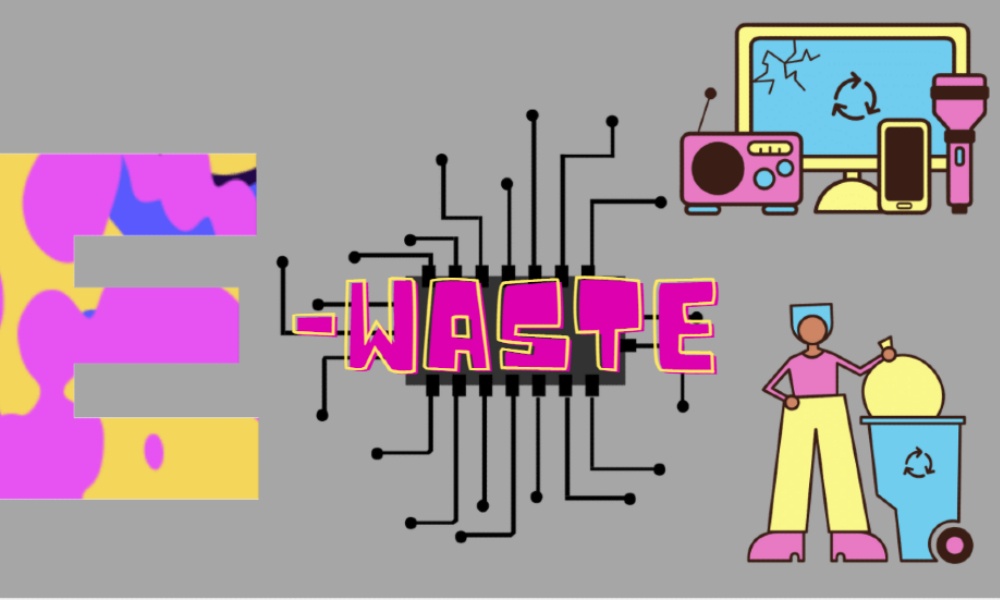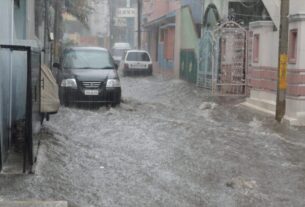The city largely depends on e-bins and collection drives for disposal of e-waste.
The state’s waste management policy doesn’t address e-waste disposal. E-waste disposal currently relies heavily on collection drives and e-bins set up by NGOs.
“Bangalore has one of the best waste management policy- the 2 bin, 1 bag, which handles the waste in a systematic manner. However, e-waste isn’t a part of this supply chain and since the majority of people aren’t aware of e-bins, e-waste isn’t properly disposed,” said Sandeep Anirudhan, Environmentalist.
Kalyan, junior health inspector, Solid Waste Management (SWM), Bruhat Bengaluru Mahanagara Palike (BBMP) official said, “Right now we don’t have a policy for e-waste. We plan to collect e-waste probably once a week from next month onwards, but not sure.”
The Karnataka State Pollution Control Board (KSPCB) has only been supportive in terms of granting permits for installing disposal boxes around post offices and nothing more, said Ankita Kunwar, project manager at Saahas NGO.
Around 3,230 kilo tonnes of e-waste was generated in India in 2019, according to the Global E-waste Monitor 2020 report. Centre of Science and Environment (CSE) reported 3.23 million metric tonnes of e-waste generation in India in 2019. Karnataka’s contribution is 6.2 percent to the total e-waste. But the KSPCB so far doesn’t have official data about the amount of e-waste produced in the state.
“There are 46 drop boxes around the city, cleared out after 30-45 days, and apart from e-bins, we also have collection drives and pick up services,” said Kunwar. She added that the waste generated in the bins fluctuates every time, but there are some locations like Malleswaram where the bins are mostly filled up.
The NGO collects about four tonnes of e-waste through collection drives, drop boxes and pick up drives in a month, said Kunwar. After collecting, the waste is sent to a place from where government authorized recyclers collect it for further segregation.
The second quarter of 2021 saw 382 kgs of e-waste, she said. There was a decline in e-waste disposal during the pandemic, she added. Gopi, manager at E-Cycle Solution said that in the past two years, e-waste disposal has gone down due to covid-19. Another issue is the lack of awareness about the hazardous effects of storing e-waste at homes. He said, “Just like people carry their own bags for shopping and wear masks, they should also discard e-waste regularly.”
Available but at specific locations
“We install e-bins in areas that are mostly accessible by the general public, and there is a distance of about three to four kilometers between two bins.” Kunwar said that one of the bins in Malleswaram at Eat Raja juice shop is almost full every month, while the bin at Karnataka Golf Association (KGA) is the least used one.
Usha Apartment in Jayanagara has an e-bin, however resident Jagdish Kumar said that it isn’t used for e-waste disposal but has dry waste in it.
Sandhya Narayanan of Solid Waste Management Round Table (SWMRT) said, “Since refurnish and repair of electronic items is still prevalent in India, a large proportion of waste doesn’t actually end up as e-waste.” She added, “The collection of e-waste is not very well mainstreamed and most people store waste for a long time. Also, collection of non-bulk e-waste in the city is mostly done through NGOs, more as a social cause.”
Under the bE – Responsible initiative, the NGO plans to install four to five more e-bins in the city by the end of 2021.
Sandeep Anirudhan raised his concern about e-waste not being a part of the city’s waste supply chain and recommended addition of one more bag to the existing ‘2 bin, 1 bag’ policy to make e-waste disposal more systematic.





It lead to the awareness that we must dispose e-waste regularly as it is hazardous and not environmental friendly.
Thanks Isha Rautela.